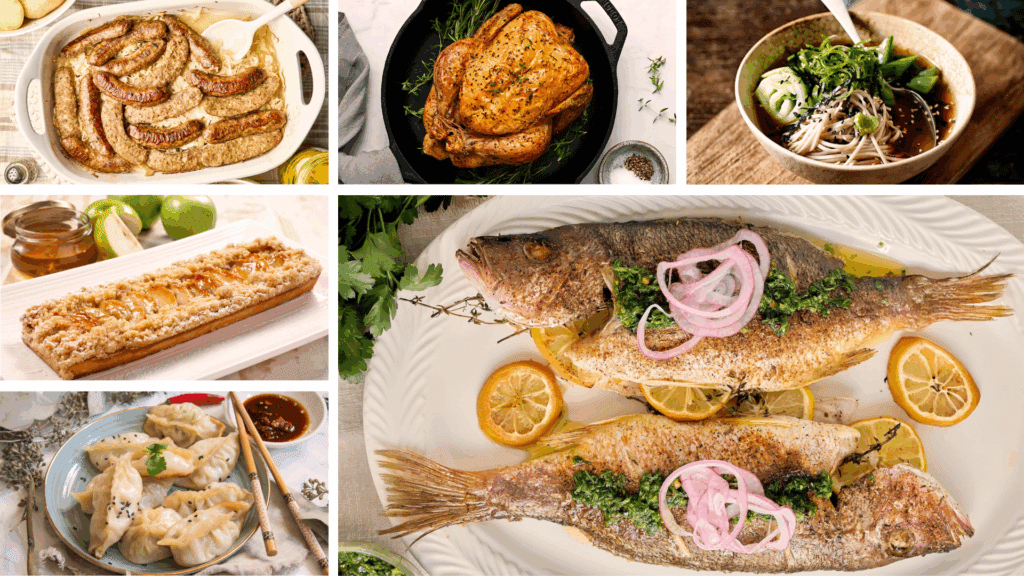New Year’s Day meal traditions have always meant more to me than just food; they’re a way to start the year with comfort, family, and a little bit of hope.
In this post, I’ll share some traditional meal ideas and New Year’s food traditions that you can enjoy on January 1st.
Each dish has its own meaning and is said to bring luck, wealth, or happiness in the year ahead. You’ll find a mix of hearty main dishes, simple sides, and sweet treats that you can make at home.
I’ll also give you a few easy tips for planning your New Year’s menu and keeping things stress-free.
If you’re cooking old family recipes or trying something new, I hope these ideas help you create a meal that feels special and start your year on a warm note.
The Meaning Behind New Year’s Day Meals
I’ve always loved how food carries meaning, especially on New Year’s Day. Many people, including me, believe what you eat at the start of the year can shape the months ahead.
Certain ingredients have become symbols of good fortune, wealth, and new beginnings.
For example, greens like collards or mustard greens stand for money and growth because their color looks like cash. Pork symbolizes progress and plenty since pigs root forward as they eat.
Beans, especially black-eyed peas, are said to bring prosperity since they look like tiny coins.
These beliefs change depending on where you live. In the South, people mix pork, beans, and greens for luck. In Asia, long noodles mean long life.
No matter the tradition, these symbolic meals remind you and me to start the year with hope and gratitude.
Must-Have Traditional New Year’s Day Meals for Good Luck
These traditional dishes are more than just delicious; they carry meanings of luck, wealth, and fresh beginnings. Here are some favorites to help you start the year with joy and good fortune.
1. Black-Eyed Peas
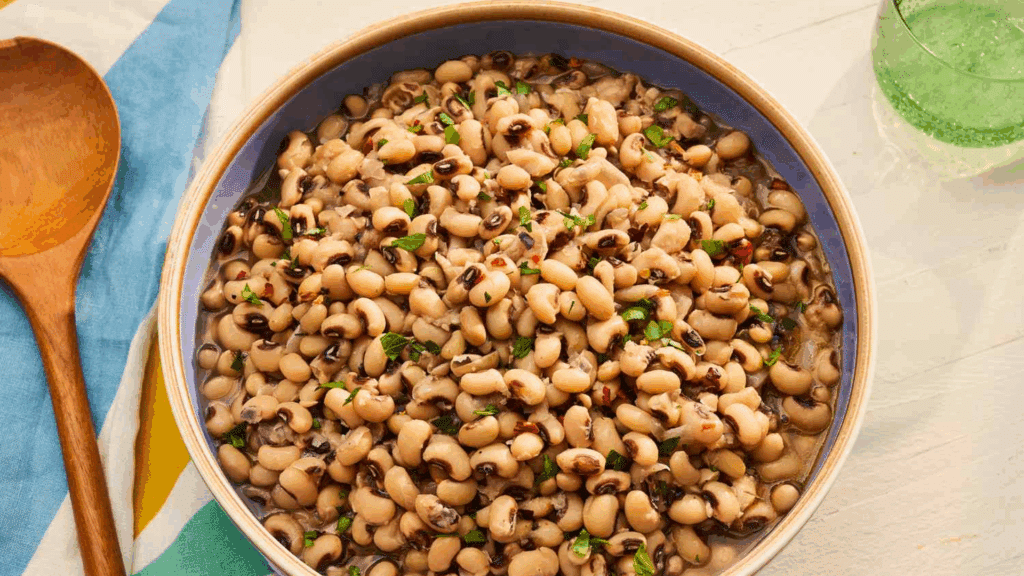
In the American South, black-eyed peas are a New Year’s Day staple believed to bring luck and prosperity.
Their small, round shape looks like coins, symbolizing wealth and the hope of a better year ahead. This tradition has been passed down for generations, often shared with family to mark new beginnings.
Slowly simmered with ham hocks, bacon, or smoked turkey, the peas take on a rich, savory flavor. They’re simple to make ahead and taste even better the next day.
Serving or pairing ideas:
- Serve over rice or with warm cornbread.
- Add collard greens for the classic “luck and money” combination.
2. Collard Greens
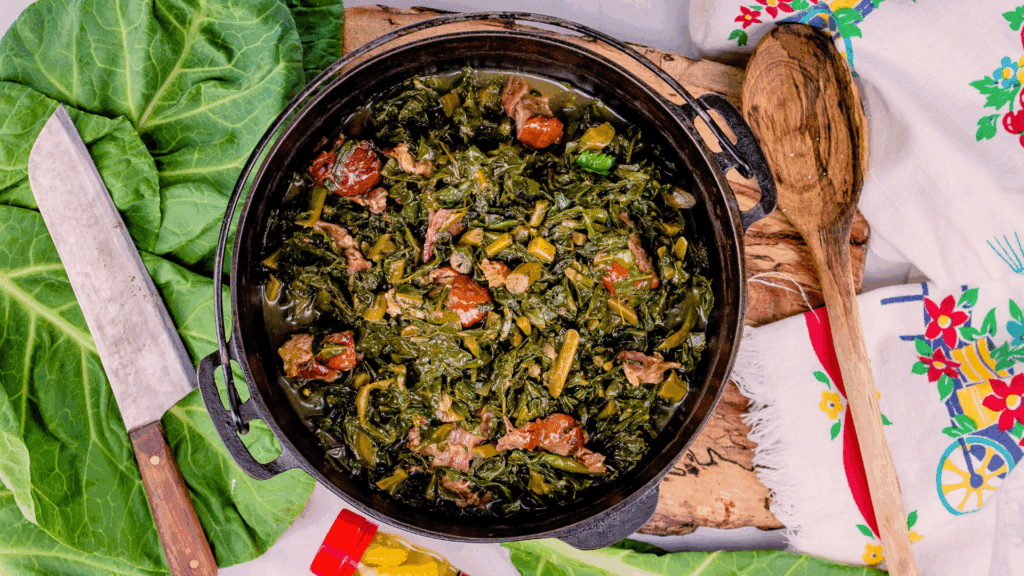
In the South, collard greens are a symbol of money and growth for the year ahead.
Their deep green color reminds people of folded dollar bills, making them a popular dish for good fortune.
This long-standing tradition is often part of New Year’s food traditions passed down through families. Slowly simmered with bacon, ham hocks, or smoked turkey, collards develop a deep, hearty flavor.
They’re easy to prepare early and reheat perfectly for a cozy, satisfying meal.
Serving or pairing ideas:
- Serve alongside black-eyed peas and cornbread.
- Add a splash of vinegar or hot sauce before serving.
3. Pork Roast

Pork is often the centerpiece of New Year’s food traditions, symbolizing progress and abundance.
People say pigs root forward, symbolizing progress and success. A pork roast brings warmth and comfort to the table while carrying this hopeful meaning.
Marinate it overnight with garlic, herbs, and citrus, then roast it slowly until tender and juicy. It’s an easy dish to prepare ahead and a flavorful way to start the year strong.
Serving or pairing ideas:
- Pair with sauerkraut or mashed potatoes for a German-inspired meal.
- Add roasted apples or carrots for a balanced touch of sweetness.
4. Cornbread

Cornbread is a golden favorite served on New Year’s Day to symbolize wealth, comfort, and success. Its warm yellow color is said to resemble gold, making it a hopeful dish for prosperity in the months ahead.
A staple of Southern kitchens, it’s often baked fresh in a cast-iron skillet for that perfectly crisp edge and soft, crumbly inside.
It’s also one of the easiest dishes to make in advance, simply reheat before serving, and it’s just as delicious.
Cornbread adds a cozy, homemade touch that ties the meal together beautifully.
Serving or pairing ideas:
- Pair with collard greens and black-eyed peas for a classic Southern trio.
- Serve with butter, honey, or maple syrup for a touch of sweetness.
5. Hoppin’ John

Hoppin’ John is a Southern favorite believed to bring luck, abundance, and new opportunities in the year ahead.
Made with rice, black-eyed peas, and pork, every ingredient has a meaning: the peas symbolize coins, rice stands for wealth, and pork represents progress.
Rooted in African and Southern traditions, it’s often served with greens and cornbread.
It’s simple to make, full of smoky flavor, and even better the next day, making it a perfect New Year’s dish to share with family.
Serving or pairing ideas:
- Serve with collard greens and cornbread.
- Add a sprinkle of green onions or hot sauce for a little spice.
6. Sauerkraut and Sausage
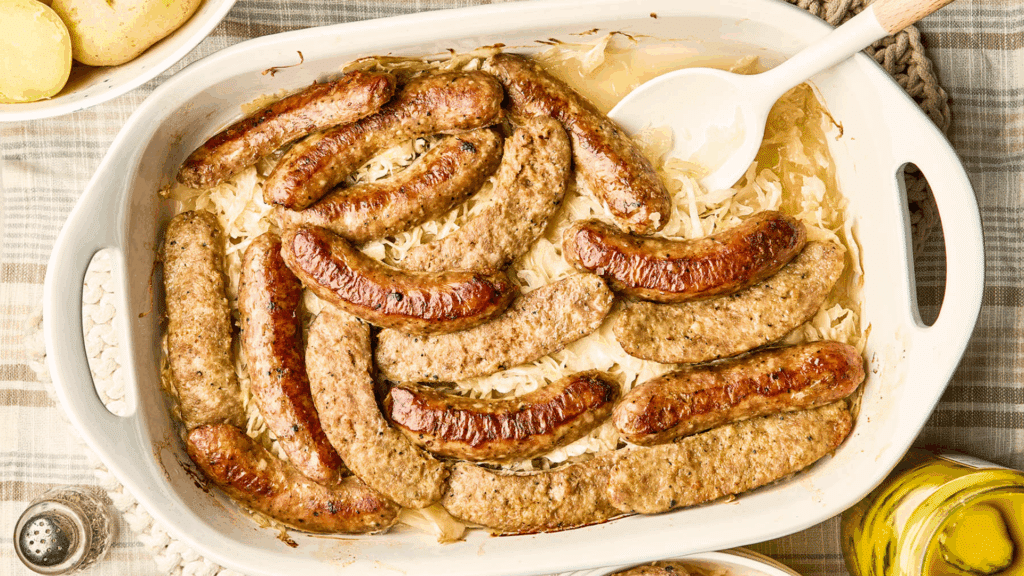
In Germany and parts of Eastern Europe, sauerkraut and sausage are enjoyed on New Year’s Day as a sign of wealth, good fortune, and happiness.
The long strands of cabbage symbolize a long life, while sausage represents abundance and unity.
Slow-cooked together, they create a hearty, savory meal that’s both simple and satisfying. Many families prepare this dish early in the day, letting the flavors blend as it simmers.
Its tangy aroma fills the home and sets the tone for a fresh, hopeful start to the year.
Serving or pairing ideas:
- Serve with mashed potatoes or rye bread.
- Add mustard or sliced apples for a sweet-tart balance.
7. Lentil Soup

In Italy, lentils are eaten on New Year’s Day to bring wealth and prosperity, their small, round shape resembling coins.
This tradition dates back centuries and remains a comforting way to begin the year.
Lentil soup is both hearty and healthy, made with vegetables, herbs, and olive oil for a simple yet flavorful dish.
The lentils simmer quickly, making it easy to prepare even on a busy day. Warm, nourishing, and filled with meaning, it’s a meal that invites comfort and good fortune.
Serving or pairing ideas:
- Serve with crusty bread or Italian sausage.
- Add spinach, kale, or a drizzle of olive oil for extra flavor.
8. Tamales
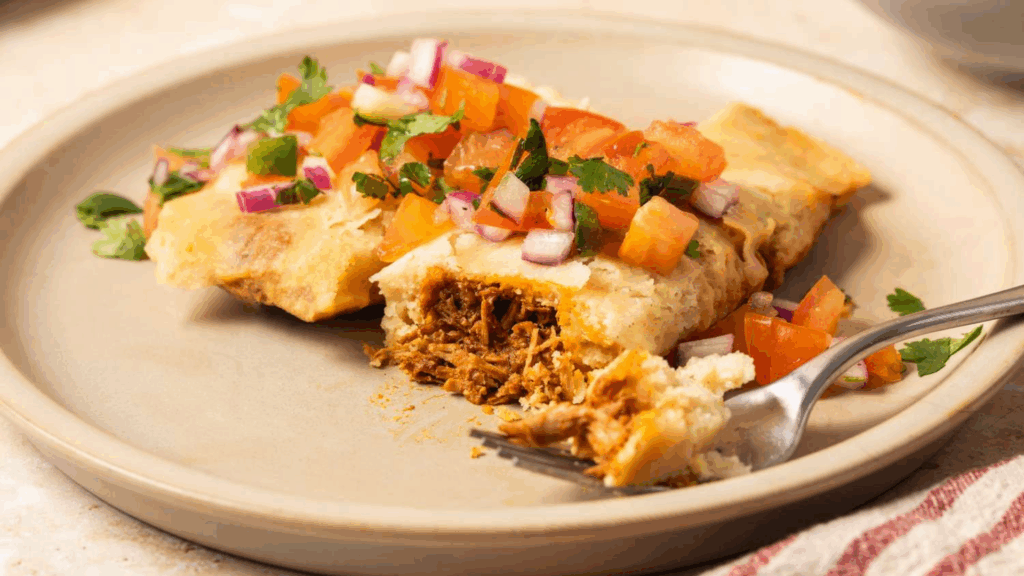
In Mexico, tamales symbolize family, togetherness, and renewal.
They’re made by spreading masa dough on corn husks, filling them with meats, cheese, or beans, then steaming until tender.
Preparing tamales is often a family tradition where everyone joins in, creating memories as they cook.
The finished dish is rich, flavorful, and easy to reheat, perfect for large gatherings. Tamales remind people of unity, hard work, and the joy of sharing food made with love.
Serving or pairing ideas:
- Serve with rice, beans, or salsa on the side.
- Add guacamole or sour cream for a creamy contrast.
9. Fish
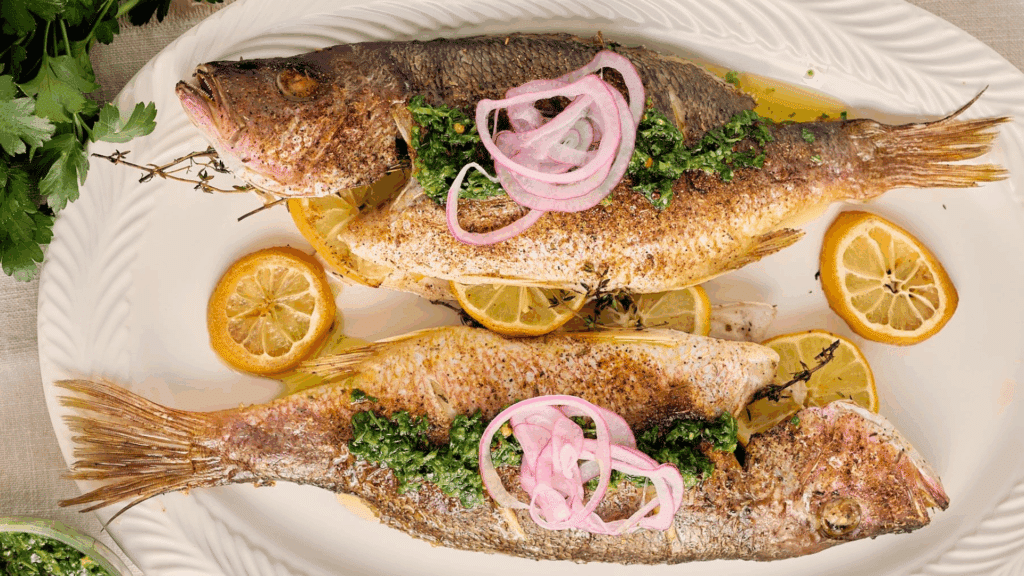
In many parts of the world, fish is served on New Year’s Day as a symbol of prosperity, progress, and abundance.
Because fish swim forward, they represent moving ahead into the new year with purpose and success.
Their shiny scales are also said to resemble coins, tying the dish to wealth and good fortune. In some cultures, fish is served whole to symbolize unity and completeness within the family.
Whether baked, grilled, or steamed, it’s a flavorful and meaningful way to start the year fresh.
Serving or pairing ideas:
- Serve with lemon, herbs, and roasted vegetables.
- Pair with rice, noodles, or a light salad for balance.
10. Dumplings
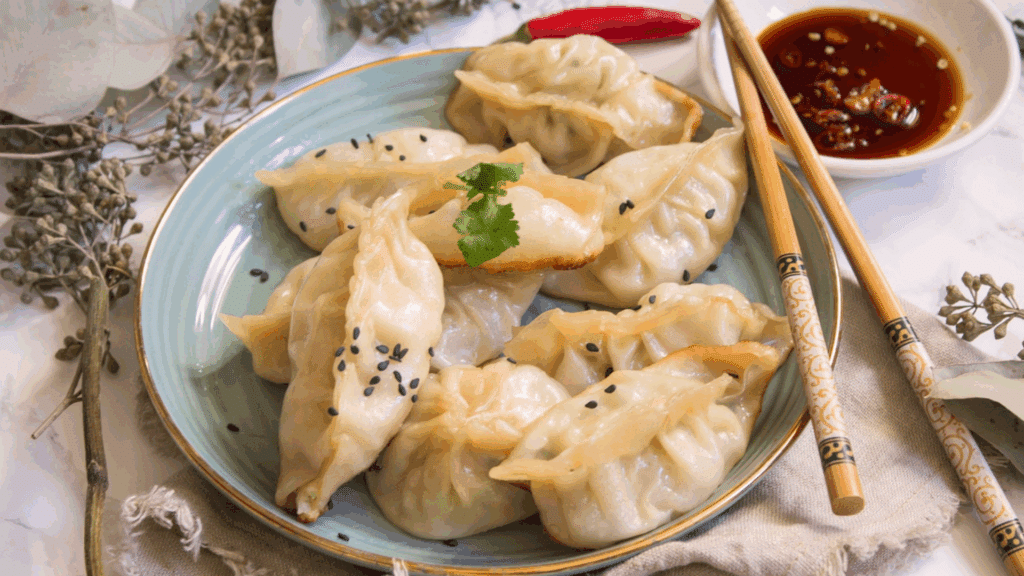
In China, dumplings are one of the most cherished dishes for celebrating the new year, representing wealth, harmony, and success.
Their shape resembles ancient gold ingots, symbolizing prosperity for those who eat them.
Families often gather to make dumplings together, turning the process into a joyful tradition that connects generations.
They can be filled with pork, shrimp, or vegetables, then steamed, boiled, or pan-fried to perfection. Easy to make ahead and freeze, dumplings are both practical and full of meaning.
Serving or pairing ideas:
- Serve with soy sauce, chili oil, or vinegar dipping sauce.
- Pair with stir-fried vegetables or noodle soup for a complete meal.
11. Soba Noodles
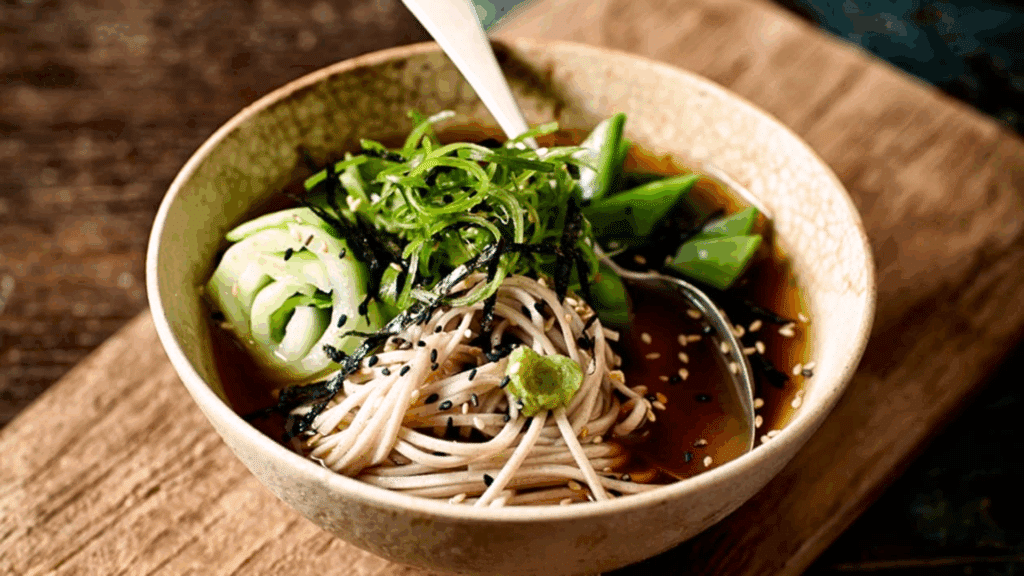
In Japan, soba noodles are an essential part of New Year’s celebrations, representing long life, strength, and a fresh start.
This centuries-old custom, called Toshikoshi Soba (meaning “year-crossing noodles”), is all about leaving behind the hardships of the past and stepping into the new year with peace.
The long, thin noodles stand for endurance, while their soft, breakable texture reminds people to move forward freely.
They’re light, quick to prepare, and delicious whether served warm in broth or chilled with dipping sauce.
Serving or pairing ideas:
- Serve in a warm broth with scallions, mushrooms, and seaweed.
- Enjoy cold with soy dipping sauce and a side of vegetable tempura.
12. Cabbage Rolls

Across Eastern Europe, cabbage rolls are a comforting dish tied to abundance, comfort, and new beginnings.
Tender cabbage leaves are filled with rice, meat, and spices, then rolled up and simmered slowly in tomato sauce until soft and full of flavor.
The wrapping of the cabbage symbolizes protection and the start of a new season.
Families often prepare large batches to share, making it a meal that brings people together. Cabbage rolls can be cooked in advance, stored easily, and taste even better the next day.
Serving or pairing ideas:
- Pair with mashed potatoes, buttered noodles, or crusty bread.
- Add a dollop of sour cream or a sprinkle of herbs before serving.
13. Roast Chicken

For many families, roast chicken is a symbol of comfort, unity, and renewal.
The sight of a golden, perfectly roasted chicken coming out of the oven instantly brings warmth and togetherness.
Though some traditions avoid chicken on New Year’s Day, others see it as a meal that gathers everyone to share gratitude and connection.
Roasting it with garlic, herbs, and lemon creates a savory aroma that fills the home. It’s also practical, easy to prepare in advance, and great for leftovers the next day.
Serving or pairing ideas:
- Serve with roasted root vegetables, rice, or mashed potatoes.
- Add gravy, lemon butter, or fresh herbs for extra flavor.
14. Sweet Rice Cake (Tteokguk)
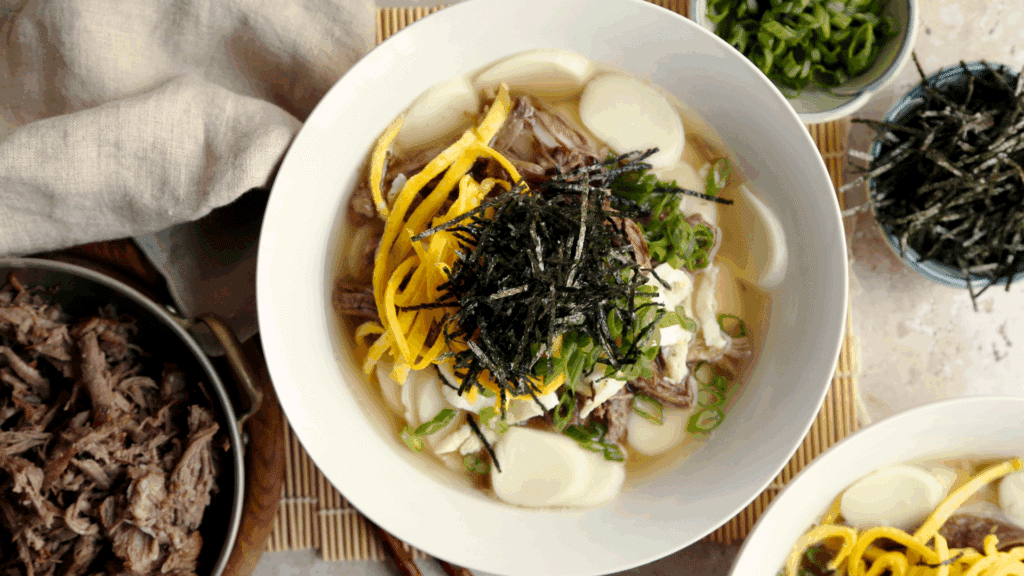
In Korea, tteokguk, a warm soup made with thinly sliced rice cakes, is eaten to mark growth, renewal, and longevity.
It’s said that eating a bowl signifies turning a year older and beginning a clean, hopeful chapter. The white rice cakes represent purity and a fresh start, while their round shape stands for wealth and harmony.
The soup is made with beef or anchovy broth and topped with egg, seaweed, and green onions. It’s light yet filling and often shared among family members on the morning of New Year’s Day.
Serving or pairing ideas:
- Serve with kimchi or pickled radish for a tangy contrast.
- Garnish with egg strips, seaweed, and sesame seeds.
15. Apple or Honey Desserts
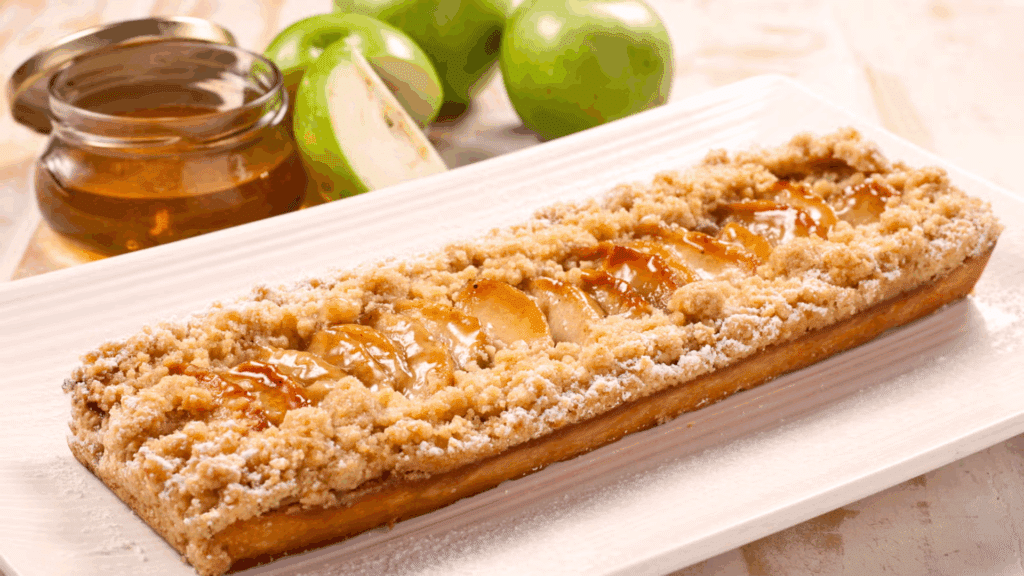
Apple and honey desserts bring sweetness, joy, and hope to the beginning of the year. Found in many cultural celebrations, these treats remind people to start fresh with kindness and gratitude.
Honey symbolizes a sweet life ahead, while apples stand for health and happiness.
Whether baked into pies, drizzled over tarts, or folded into cakes, these desserts fill the home with warmth and comfort.
They’re easy to make ahead, store well, and create the perfect ending to a rich holiday meal.
Serving or pairing ideas:
- Enjoy warm with whipped cream, custard, or vanilla ice cream.
- Drizzle with honey or dust with cinnamon for an inviting touch.
What Not to Eat on New Year’s Day?
Some people believe that what you don’t eat on New Year’s Day matters just as much as what you do.
For example, chicken is thought to be unlucky because it scratches backward, which could mean moving back instead of forward in the new year.
Lobster and other shellfish are also avoided since they move backward or sideways, symbolizing setbacks.
In some traditions, winged birds are skipped so good luck doesn’t “fly away.” Folklore like this adds a bit of fun to the day, even if you don’t take it too seriously.
I like to think of it as a reminder to focus on foods and habits that help you move forward.
Whether you follow these customs or not, the idea behind them is simple: start the year with positive choices and a hopeful spirit.
Easy Tips for Planning Your New Year’s Menu
Planning your New Year’s meal doesn’t have to be stressful. With a little prep and balance, you can serve a full meal and still enjoy the day.
- Mix main dishes, sides, and desserts: Choose one hearty main, two easy sides, and a simple dessert to keep your menu balanced and satisfying.
- Make dishes ahead of time: Prep casseroles, marinate meats, or bake desserts a day early so you can relax and spend time with guests.
- Use slow cookers or ovens wisely: Let your appliances handle the cooking while you focus on setting the table or greeting family.
- Keep table setup simple: A clean tablecloth, candles, or small centerpieces add warmth without extra effort.
- Plan portions smartly: Cook enough for seconds but avoid waste; leftovers make great meals for the week ahead.
Conclusion
As I see it, a New Year’s Day meal is about more than just food; it’s about connection, comfort, and starting fresh with the people you care about most.
Every dish, from greens to black-eyed peas, carries a bit of history and hope for the year ahead.
When you sit down to eat, you’re not just sharing a meal; you’re sharing tradition and gratitude. I hope this list of traditional recipes inspires you to cook something meaningful this year.
Whether you keep old family favorites or try something new, make it a meal that brings joy to your table.
So grab your apron, invite a few loved ones, and start the year with food that makes you feel thankful and ready for what’s next.


